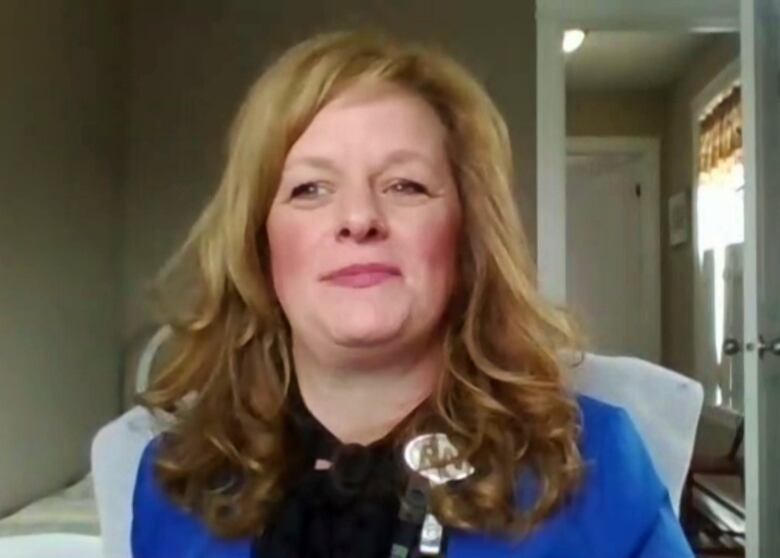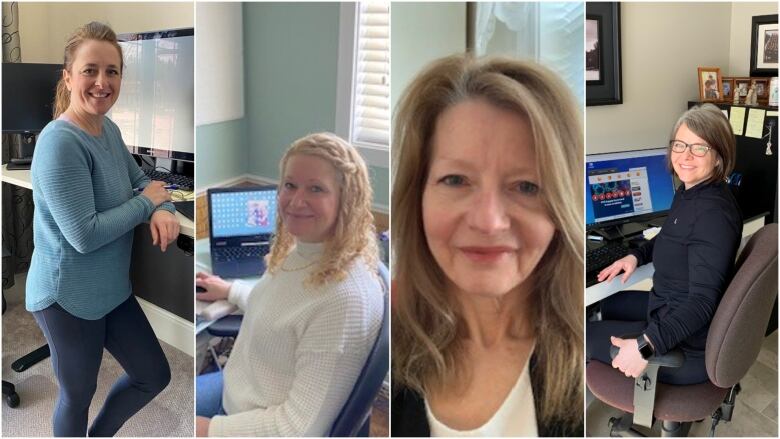'Dealing with a totally new virus': Inside the outbreak with Eastern Health's top contact tracer
Over 90 per cent of cases have been traced back to a source, says Suzette Spurrell

Contact tracing has been an important element in Newfoundland and Labrador's COVID-19 response, with medical professionals working to find the source of every new infection over the past year.
While Chief Medical Officer of Health Dr. Janice Fitzgerald has become the public face of the response, contacttracing teams across the province havebeen working behind the scenes to identify anyone who may have been exposed to the virus. After months of relatively flat numbers, their work took on new importance in February with an outbreakof the B117 variant, responsible for 575 cases of COVID-19, with 4,606 contacts of those people to be traced, according to numbers from Eastern Health.
To find out more about the contact-tracing process and what getting through the latest outbreak was like, the CBC's Peter Cowan spoke with Suzette Spurrell, a communicable disease control nurse co-ordinator at Eastern Health.
Here is partof their conversation, which has been edited for length and clarity.
Q:When did you first realize the cases we were dealing with in February were different from what we had seen when it comes to COVID-19?
A:We were dealing with 100 cases a day at one point, so it felt like we were getting cases every five minutes. It was totally different than what we had dealt with before, it was almost like we were dealing with a brand new virus.We knew that there was something different about this virus than we had seen before, and we weren't surprised when we heard the variant was part of the equation here. One of my coworkers described it well when we had time to reflect last week. She described it as though we were hit by a COVID-19 missile. That's exactly how it felt. There was something big going on here, and we had to act fast.
Q: We hear at the briefings about contact tracing being underway when new cases are announced. What does that exactly mean, "behind the scenes"?
A: We're notified through email when we get a positive case of COVID. We conduct a detailed interview with every case of COVID-19, and during that interview we ask questions such as exposure criteria and symptom onset date to determine the infectious period of the case. Then we collect their contacts as well.We find out where that case has been, from their workplace, team sports, activities, social events, things like that.
Our team takes contact tracing very seriously.We do not leave one stone unturned. We've gone as far before as getting permission from the case to basically contact an establishment where they were dropped off to get security footage from that establishment so we can find one contact, the driver who dropped them off. We have cases of COVID-19 who have no contacts, and we also have cases of COVID-19 where in the most recent outbreak the most contacts we had for one case was 189 contacts.

Q:How big a role does leaving no stone unturned play in being able to quickly get this most recent outbreak under control?
A:Our team is like a dog with a bone when it comes to finding the source of infection. Me personally, that is the thing that I dwell on the most I think. So if we get a case that's not epilinked in our province, to us a red flag goes off.
We want to make sure that we track down the source of the infections. What we will do is track back 14 days it's called backtracing from that time that we get that positive case identified. We track back 14 days to see if we can find out where the case has been, who they've been in contact with. Our team has been very successful in identifying sources of the infections. I'm not sure about the numbers, but I do know that 91.5 per cent of those were traced back. And that's amazing, knowing that we had community spread at that time.
Q:Looking at somewhere like Ontario, where 60 per cent of cases aren't able to be traced back, why is our record so much higher?
A:I think it's because of our amazing team. Our core team of eight CDC nurses has collectively over 200 years of experience in public health. We use the principles of case management and contact tracing that we use in our daily work to control the spread of other diseases, such as STIs and TB and meningitis.We treat one case a day the same way we'd treat 100 cases a day. Don't get me wrong;there were times in the most current outbreak we thought we were losing control of the virus. But we managed to remain calm and certainly supported each other.We stayed on course, and we feel like we did a really good job with the last outbreak by keeping that consistent approach.

Q:When you have cases where a source can't be found, how much does it weigh on you when you can't solve that mystery?
A:I don't sleep at night. I got to find the source if at all possible. We had a couple cases prior that we couldn't find a source for. We do not rest until we find that source.
That must be quite the burden to bear, when you feel like a province's ability to keep COVID out is resting on your team.
A:We're a small but mighty team;however, we needed help with this last outbreak. We could not manage it with our eight people. We did bring in probably 30 public health professionals between nurses and staff. We also did accept help and get help, thank goodness, from our colleagues across the province. We had hundreds of lists of contacts, so we really appreciate their help.
Q:What difference does thevariant make in how you do your job?
A:The variant changed many things throughout the last outbreak. At times, like I said, we felt like we were dealing with a totally new virus. We'd seen very high attack rates in households. What I mean by that is that in the "old virus" we could have a case isolate away from others in a room and they would not get COVID, the other people in the household.
However, with the variant, it was very infectious and we'd seen, nearly 100 per cent in some cases, attack rates in households. So even if the person isolated away from everyone else we still had transmission in that household.
Q: What can people do to make life easier for you and your team?
A:Our team knows first-hand the serious impact that COVID-19 has on cases, their families and their friends. We've interviewed nearly 1,000 cases. Heard their stories, heard the fear in their voices when we gave them their diagnosis of COVID-19, and we've seen families devastated when their loved ones are hospitalized or pass away. We want to stress the importance of following public health measures, especially keeping your contacts low.
This will help us continue to do this very important work to keep everyone safe, and I feel we all have a common goal in mind:that is to do our best every day to control the spread of COVID-19, and support and take care of each other along the way.
With files from Peter Cowan












_(720p).jpg)


 OFFICIAL HD MUSIC VIDEO.jpg)
.jpg)



























































































